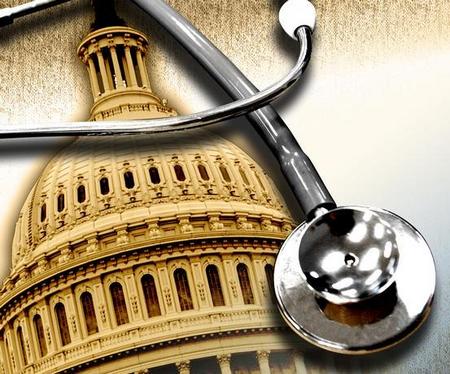|
|
A Real ‘Doc Fix’
The
New York Times
February 21, 2012

In last week’s flurry of budget deals, Congress patched together yet
another temporary fix for a flawed formula used to calculate the fees
paid to doctors by Medicare. It will hold payments flat for the next 10
months instead of cutting them by 27 percent as the formula required,
and the $18 billion to pay for it will be taken from other health care
programs. But the fix only lasts until the end of the year. On Jan. 1,
doctors will face another big cut unless Congress again steps in.
Congress now needs to devise a real fix that would be fair to doctors
and make a serious effort to slow the rise of Medicare spending. In the
near term, some doctors — highly paid specialists — should be required
to accept some reduction in fees. That won’t be enough. Congress should
also use this moment to wean doctors away from fee-for-service billing,
a root cause of escalating costs, into better and cheaper forms of care.
In 1997, Congress enacted the “sustainable growth rate” formula, which
sets annual limits on how much Medicare can pay doctors in the
aggregate. If those limits are breached, as they have been repeatedly,
the formula reduces the fees that will be paid in subsequent years for
thousands of medical services.
The approach sounded sensible. But once the limits were breached and
fees were lowered, many doctors made up for the reductions by
performing more tests and procedures. That kept driving up Medicare’s
spending on doctors and often required bigger cuts in fees the next
year. As the cuts spiraled, medical lobbyists stepped in to demand
relief, which Congress has doled out in temporary doses. At this point,
holding fees at current levels instead of reducing them as required
would cost some $300 billion over the next decade.
The Medicare Payment Advisory Commission, a group of independent
experts who advise Congress, has called for a compromise between
doctors and Washington. Congress would set a new schedule of fees and
find an additional $200 billion in savings over the next decade to help
close the fee gap. The other $100 billion would come by cutting the
fees for specialists by 5.9 percent a year for three years and then
holding them flat. The commission also urged Congress to direct the
secretary of health and human services to identify overpriced and
overused services such as imaging scans and reduce the fees paid for
them.
The commission’s proposal would wisely protect primary care doctors,
holding their fees flat for a decade. Virtually all experts agree that
primary care physicians and their assistants are the key to
coordinating patient care in our disjointed health care system. The
specialists and their lobbyists will fight hard, but most are well paid
and can afford it.
The bigger challenge will be to improve the way medical care is
delivered and paid for in Medicare — and ultimately the entire health
care system. The reform law has created a slew of pilot projects, and
some experts believe the country should wait to see how those turn out.
But the leverage that would come with establishing a new Medicare
reimbursement system should not be wasted.
Congress should establish a fee schedule that pays doctors more if they
leave fee-for-service and form organizations that will coordinate care
or take on the financial risk of managing a patient’s care for a year
at a fixed fee. That will take away the incentive to perform numerous
costly, unneeded services. And it would be the start of a real fix for
the rising cost of Medicare.
More Information on US Health Issues
|
|



